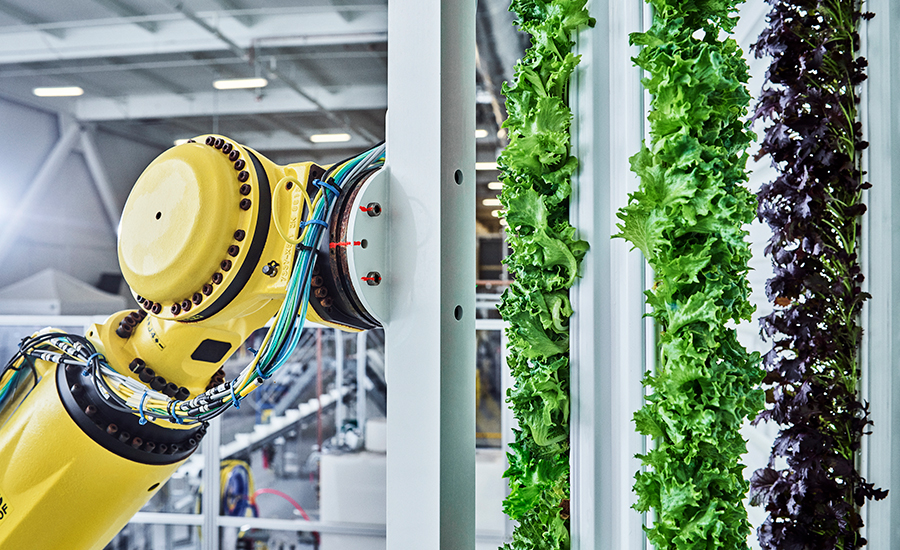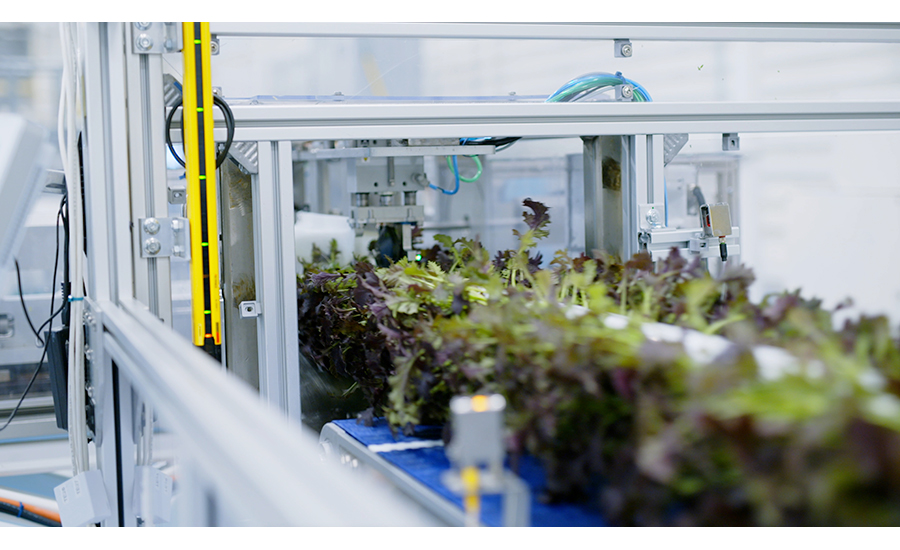Food companies, retailers convert sustainable talk into action
Brands that promote environmental initiatives can achieve measurable results through more sustainable inputs and products

This rural farm recently harvested a corn crop. Ideally, the field would be planted with soybeans for the next year to replenish nitrogen in the soil. Photo courtesy of Wayne Labs
With Earth Week occurring this month, consumers are especially in tune with sustainability issues related to climate change. In many parts of the world, that has caused water shortages, while conventional farming techniques have only exacerbated water scarcity, leading to shortages of commodities and other ingredients, causing food prices to become unaffordable for many people.
The Food and Agriculture Organization (FAO) of the United Nations recently released its report, “2021 State of Climate Services: Water.” In it, FAO estimates that high and very high water scarcity currently affects 3.2 billion rural people with one-sixth of the world’s population living in severely water-constrained agricultural areas. In addition, more than 170 million hectares—more than 60% of irrigated croplands—are subject to high water stress.
Conventional farming practices have only made matters worse. Soil erosion, water retention failure, fertilizer runoff and its resultant pollution and low crop yields are just a few problems caused by poor farming practices.

Government, processors take action
The USDA, under the leadership of Tom Vilsack, recently released its “Climate-Smart Agriculture and Forestry Partnership Initiative.” The initiative will provide financing to support a set of pilot projects that provide incentives to implement climate smart conservation practices on working lands and to quantify and monitor the carbon and greenhouse gas benefits associated with those practices.
“Through extreme weather, drought and fire, our agriculture producers are on the frontlines of climate change,” says Vilsack. “The new Climate-Smart Agriculture and Forestry Partnership Initiative will support pilots that create new market opportunities for commodities produced using climate-smart practices and position U.S. farmers, ranchers, and forest landowners as leaders in addressing climate change. The pilots will invest in the science, monitoring and verification to measure the benefits of these climate smart practices.”
One food processor that hasn’t waited for the government to develop a program and has taken its own steps to improve croplands is Danone North America. In fact, the company has just reported a successful fourth year of its Soil Health Initiative, exceeding its 2022 goal. To date Danone’s Soil Health Program—which uses regenerative agriculture techniques—has prevented more than 337,000 tons of soil from erosion, resulting in nearly $3.3 million in cost avoidance for farmer partners who supply brands like Oikos, Two Good and Horizon Organic.
Danone defines regenerative agriculture as a set of farming practices that helps protect soils, water and biodiversity, and improve animal welfare, while acknowledging the key role of farmers. Launched in 2017, Danone North America introduced a five-year soil health program, which aims to improve organic matter in soils to increase carbon sequestration and improved yields, reduce chemical use, restore biodiversity and enhance soil water holding capacity, helping to provide farms with improved, long-term economic resilience.
After just completing its fourth year, the soil health program has expanded to more than 140,000 acres across the U.S. and Canada, representing 72% growth in acreage from year-3 results.

Four-year evaluation shows meaningful improvements
Since its inception, Danone’s soil health program has shown measurable results:
- The program has reduced nearly 119,000 metric tons of carbon dioxide equivalent and sequestered more than 31,000 tons of carbon through regenerative soil health practices.
- The program has prevented more than 337,000 tons of soil from erosion, resulting in nearly $3.3 million in cost avoidance for farmer partners. Additionally, farmer partners planted cover crops on 51% of the program acreage versus the national average of 4%, and practiced reduced or no till management practices on 63% of the program acreage versus the national average of 33%.
- Danone’s efforts to foster on-farm biodiversity include conserving just over 1,700 acres of grassed waterways, buffer lands, forest and wetlands.
- The program has increased use of soil moisture probes by 55% in year four, helping to ensure and ultimately enhance soil’s water-holding capacity through informed and improved water usage practices.
“On our farms, we see firsthand the vital role soil plays in feeding our world and the positive impact regenerative farming can have in recharging our natural resources for future generations. By working with a fellow B Corp, Danone North America, we have a tremendous amount of opportunity to make an impact on our farms and the broader food system,” says Ken McCarty, co-owner of MVP Dairy and McCarty Family Farms.
Danone’s tech tool to help its farmers benchmark their results
How can a farmer gage its performance when adopting Danone’s soil health program? With collaboration from Sustainable Environmental Consultants (SEC), Danone built a web-based software tool that lets its farmers obtain a comprehensive view of their operations and forecast the return on investment (ROI) of personalized sustainability practices to drive increased adoption. Danone calls the tool “R3 ROI,” where R3 means “Robust, Resilient, Reliable.”
The web-based application serves as a benchmarking and comparison tool that uses farm-specific verified data—deployed from the EcoPractices platform developed by SEC—to show the projected impact of change in farming practices, allowing farmers to evaluate their specific operations. The R3 ROI tool proposes targeted practices as part of SEC’s Sustainable Continuous Improvement Plan (SCIP), which is utilized to advance regenerative agriculture practices on farms.
Danone’s farms that use the R3 ROI tools have adopted the following SCIP practices:
- Implementing no-till farming practices
- Planting cover crops
- Establishing buffer zones to prevent contamination between certified organic production and non-organic land

Water conservation
Food and beverage companies are recognizing how critical water is and are doing their part to conserve water, but there is still work to be done. Beverage companies especially realize how important water and water resource are.
To emphasize water conservation, the Water Council announced a new program to improve, report and recognize good corporate water stewardship. WAVE—Water Stewardship Verified—provides an onramp for companies to develop thoughtful strategies, set meaningful goals and take effective action on water across the enterprise, concluding with independent verification that the company has built a credible foundation of knowledge on which to base its water stewardship work.
The Water Council, an international nonprofit dedicated to freshwater innovation, spent the past two years creating, piloting and refining the WAVE methodology. For years, The Water Council has helped companies from large multinational corporations to small family-owned businesses mitigate water-related risk and improve water stewardship outcomes. However, it identified a gap in the market when it comes to connecting corporate water stewardship plans and goals with meaningful operational action. The WAVE program is a demonstrated method that bridges that gap.
WAVE participants will be independently verified by SCS Global Services, an international third-party verification agent. Independent verification is crucial to demonstrate to investors, customers and other stakeholders that a company has prioritized water-related action where it matters most, ultimately mitigating water-related risk and addressing shared water challenges and opportunities while building a more water-resilient supply chain.
Saving water, energy and farmland
Walmart has been out in front in several ways over the years, the most recent example teaming up with IBM to develop a blockchain a few years ago. Now, Walmart sees a future in indoor vertical farming and has signed an agreement to invest $400 million in Plenty, an indoor vertical farming company. Plenty’s indoor vertical farming technology platform will deliver fresh produce to Walmart retail stores. As part of the investment, Walmart will also join Plenty’s Board of Directors.
The long-term commercial agreement allows Walmart to source Plenty’s leafy greens for all its California stores from Plenty’s Compton, Calif. farm beginning later this year. Walmart is the first large U.S. retailer to invest significantly in vertical farming.
While vertical farming isn’t about to replace traditional farming practices any time soon, it does help alleviate some supply chain challenges, reduce water and energy needs, and decreases the chances of foodborne illness when leafy greens are grown indoors. One look at the FE’s Plant Construction Survey certainly shows these indoor farms are popping up in many areas across the U.S.
Looking for a reprint of this article?
From high-res PDFs to custom plaques, order your copy today!






